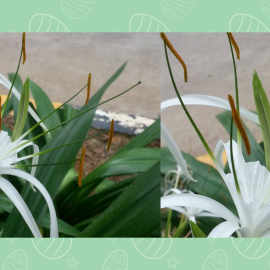
Throughout the world heart attack, cardiac arrest, stroke, etc. life-threatening conditions are on the rise. These are no longer a risk for the elderly or rich people only. Nowadays, these conditions are common in youngsters as well. The kind of environment we live in, the kind of food we intake, and the lifestyle we lead are responsible for the rise of these life-threatening conditions. These serious conditions are not diseases by themselves, but rather caused by other diseases.
In this article, we’ll help you to differentiate these interchangeably used terms to refer to conditions affecting heart, blood circulation, and brain function. Also, we would list risk factors, symptoms, treatments, how to prevent these, and the primary care that can be provided to the person suffering from one of these conditions.
Please remember, these conditions are catastrophic and may lead to death if not treated immediately.
Key Differences, Risk Factors, Symptoms, First Aid, Treatment, Prevention of Life-Threatening Conditions
Here is the summary of key differences, risk factors symptoms, first aid, treatment, and prevention mechanism for life-threatening conditions such as heart attack, cardiac arrest, stroke, and brain hemorrhage.
Heart Attack
- A heart attack occurs when the blood and oxygen flow to the heart is severely reduced or blocked, destroying a part of the heart muscle
- The longer the delay in treatment, the greater the damage to the heart muscle
- Heart attack can be mild sometimes
- Risk factors
- Irregular or abnormal heart rhythm (Arrhythmia)
- Smoking
- Hypertension (High blood pressure)
- High Cholesterol (LDL)
- Obesity
- Diabetes
- Family history of heart attack
- Symptoms
- Pain or discomfort in the chest on the left side or at the center
- Shortness of breath
- Discomfort or pain in the arm or shoulder
- Neck, jaw, or back pain
- Dizziness, weakness, nausea, or vomiting
- First aid
- If not allergic to aspirin, chew and swallow an aspirin. It may help reduce the blood clot
- CPR: If the person is unconscious, not breathing or you don’t find a pulse, start CPR (CardioPulmonary Resuscitation) to keep blood flowing. Push hard and fast on the center of the person’s chest in a very rapid rhythm.
- AED: If the person is unconscious and if an AED (Automated External Defibrillator) is available use it to deliver an electrical shock to the heart to restore the normal rhythm
- Treatment
- Tests: Blood tests, Electrocardiogram (ECG), Echocardiogram (ECHO), Chest X-ray, Cardiac Catheterization, Cardiac CT Scan
- Medication: Aspirin, Thrombolysis (Clot busters), Blood thinners, and Statins to reduce cholesterol level
- Coronary Angioplasty and Stenting
- Coronary Artery Bypass Surgery
- Prevention
- Don’t smoke
- 30 to 60 minutes of daily exercise
- Eat a healthy and balanced diet (low fat, high on fruits and vegetables)
- Maintain a healthy weight
- Quality sleep for at least 7 hours a day
- Reduce stress
- Manage blood pressure, blood sugar, and cholesterol
Cardiac Arrest
- Cardiac arrest occurs when the heart stops beating unexpectedly
- It is an electrical malfunction and may happen without any warning
- A heart attack can sometimes cause cardiac arrests
- Risk factors
- Irregular or abnormal heart rhythm (Arrhythmia)
- Trauma
- Infection
- Smoking
- Hypertension (High blood pressure)
- High Cholesterol (LDL)
- Obesity
- Diabetes
- Family history of coronary artery disease
- Symptoms
- Loss of consciousness
- No pulse
- First aid
- CPR: If the person is unconscious, not breathing or you don’t find a pulse, start CPR (CardioPulmonary Resuscitation) to keep blood flowing. Push hard and fast on the center of the person’s chest in a very rapid rhythm.
- AED: If the person is unconscious and if an AED (Automated External Defibrillator) is available use it to deliver an electrical shock to the heart to restore the normal rhythm
- Treatment
- Tests: Blood tests, Electrocardiogram (ECG), Echocardiogram (ECHO), Chest X-ray, Cardiac Catheterization, Cardiac CT Scan
- Medication: Anti-arrhythmic drugs
- Implantable Cardioverter Defibrillator (ICD)
- Coronary Angioplasty and Stenting
- Coronary Artery Bypass Surgery
- Prevention
- Don’t smoke
- 30 to 60 minutes of daily exercise
- Eat a healthy and balanced diet (low fat, high on fruits and vegetables)
- Maintain a healthy weight
- Quality sleep for at least 7 hours a day
- Reduce stress
- Manage blood pressure, blood sugar, and cholesterol
Stroke
- A stroke occurs when the blood supply to the brain is interrupted due to blood clot or bleeding happens in the brain
- Unrelated to heart, related to blood flow to the brain
- Three major types of strokes
- Ischemic: When the supply of blood is cut off to an area of the brain due to a blood clot
- Hemorrhagic: When bleeding happens in a part of the brain due to a ruptured vessel
- Transient Ischemic: Temporary blockage of blood flow to the brain. This is sometimes referred to as a mini-stroke.
- Risk factors
- Smoking
- Hypertension (High blood pressure)
- High blood cholesterol (LDL)
- Obesity
- Diabetes
- Family history of stroke
- Symptoms
- Sudden severe headache
- Sudden numbness or weakness
- Sudden vision change
- Loss of balance
- Confusion, difficulty with speech and recognition of people
- Loss of consciousness
- Nausea or vomiting
- First aid
- Help the person lie down & loosen the clothing
- Talk to the person with a calm voice
- Do not let the person go to sleep
- Do not give food, or drink
- CPR: Most stroke patients do not require CPR. If the person is unconscious, not breathing or you don’t find a pulse, start CPR (CardioPulmonary Resuscitation) to keep blood flowing. Push hard and fast on the center of the person’s chest in a very rapid rhythm.
- Treatment
- Medication: Aspirin, Thrombolysis (Clot busters), Blood pressure medicines (beta blockers, calcium channel blockers, alpha-blockers), Statins to reduce cholesterol level
- Tests: CT scan or MRI
- Thrombectomy to remove a blood clot in artery with the help of catheter and a device
- Prevention
- Don’t smoke
- 30 to 60 minutes of daily exercise
- Eat a healthy and balanced diet (low fat, high on fruits and vegetables)
- Maintain a healthy weight
- Quality sleep for at least 7 hours a day
- Reduce stress
- Manage blood pressure, blood sugar, and cholesterol. Blood pressure control is the most important step to prevent stroke.
Brain Hemorrhage
- Brain hemorrhage occurs when bleeding happens in the brain due to a ruptured blood vessel
- Bleeding can happen inside the tissue of the brain or outside it
- Brain hemorrhage is a type of stroke (Hemorrhagic)
- Risk factors
- Brain tumor
- Head injury
- Hypertension (High blood pressure)
- Excessive use of blood thinners
- Symptoms
- Sudden severe headache
- Seizure
- Sudden numbness or weakness
- Sudden vision change
- Loss of balance
- Confusion, difficulty with speech and recognition of people
- Loss of consciousness
- Nausea or vomiting
- First aid
- Help the person lie down & loosen the clothing
- Talk to the person with a calm voice
- Do not let the person go to sleep
- Do not give food, or drink
- CPR: Most stroke patients do not require CPR. If the person is unconscious, not breathing or you don’t find a pulse, start CPR (CardioPulmonary Resuscitation) to keep blood flowing. Push hard and fast on the center of the person’s chest in a very rapid rhythm.
- Treatment
- Medication: Aspirin, Thrombolysis (Clot busters), Blood pressure medicines (beta blockers, calcium channel blockers, alpha-blockers), Statins to reduce cholesterol level
- Tests: CT scan or MRI
- Craniotomy: Surgery to remove blood from the brain
- Put a tube into the brain to allow the brain fluid to drain
- Prevention
- Don’t smoke
- 30 to 60 minutes of daily exercise
- Eat a healthy and balanced diet (low fat, high on fruits and vegetables)
- Maintain a healthy weight
- Quality sleep for at least 7 hours a day
- Reduce stress
- Manage blood pressure, blood sugar, and cholesterol. Blood pressure control is the most important step to prevent brain hemorrhage.
- If you ride a motorcycle, always wear a helmet
- Always use a seatbelt while driving a car
How to Perform CPR (CardioPulmonary Resuscitation)
It is very essential to learn this simple technique to save lives.
How to Use AED (Automated External Defibrillator)
AED devices are available at public places. It is very essential to learn how to use the device.
Join our list to get instant access to new articles and weekly newsletter.



